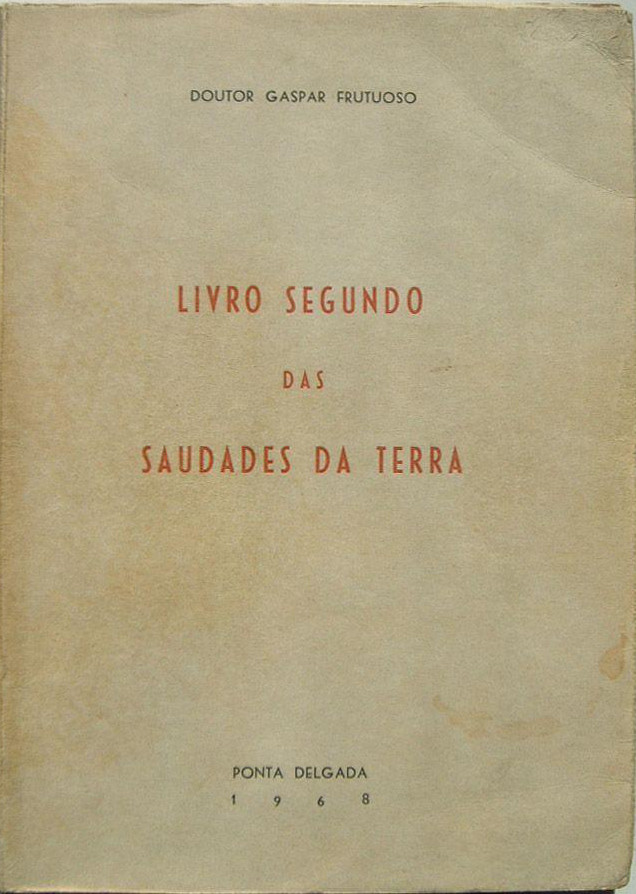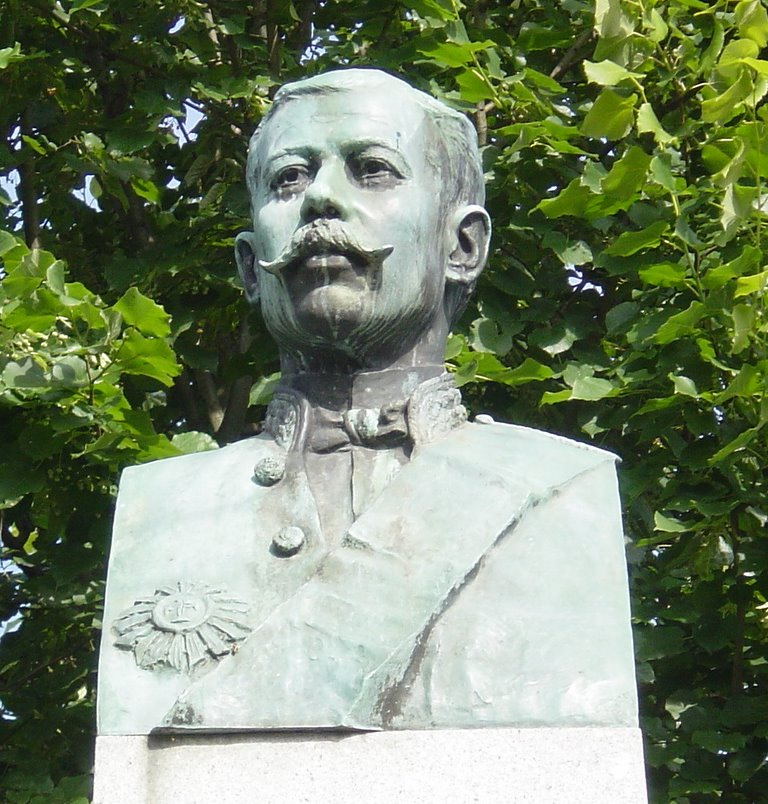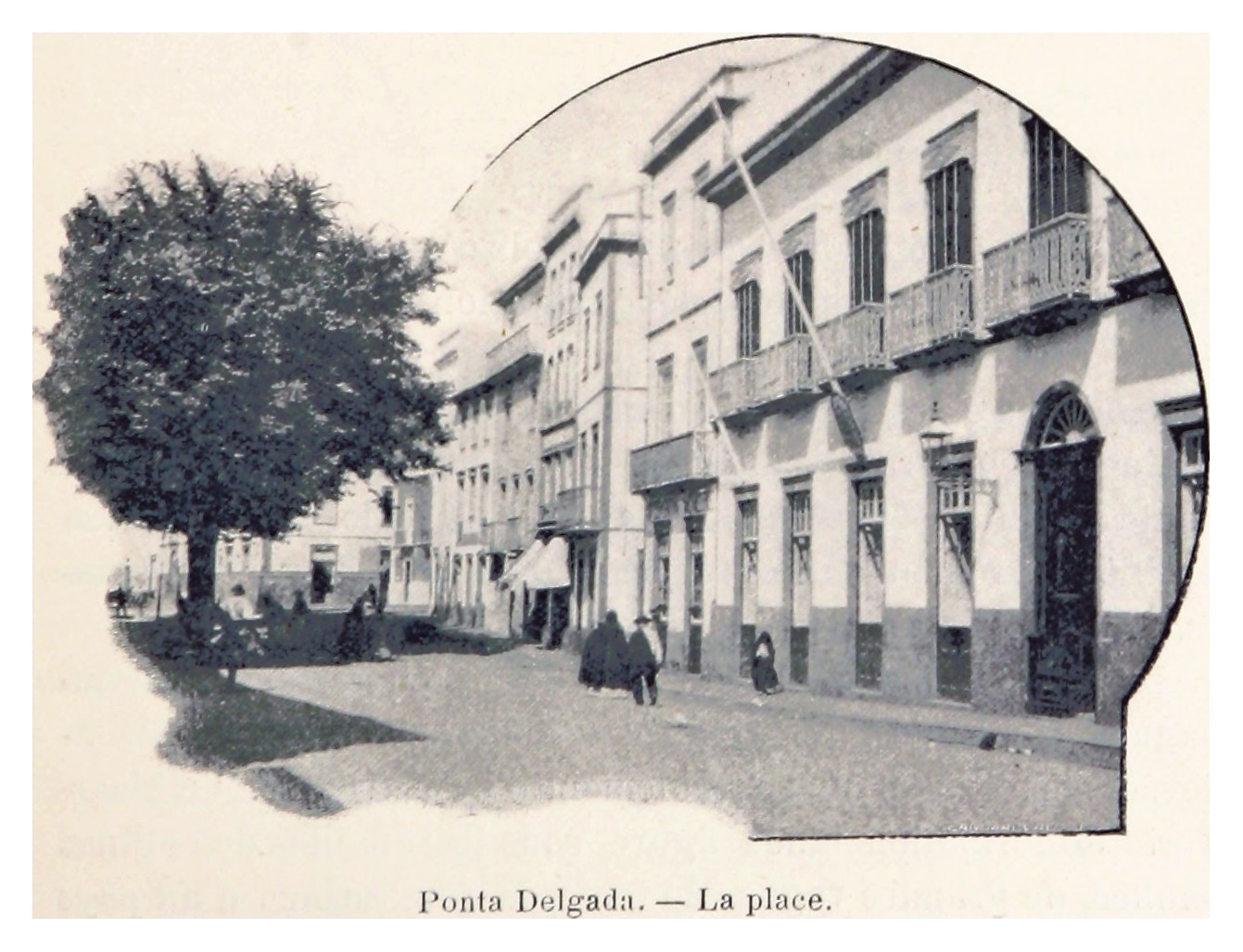|
Água De Alto
├ügua de Alto is a civil parish in the municipality of Vila Franca do Campo on the island of S├Żo Miguel in the Portuguese archipelago of the Azores. The population in 2011 was 1,788, in an area of 18.41 km┬▓. History According to historian Gaspar Frutuoso, little is known about this parish. What is known is that during the 15th century, a hermitage in this region sheltered a hospital for lepers, named ''Lazareto'' (after the saint S├Żo L├Īzaro, or Gafaria). Following Gaspar Frutuoso's reference, the community of ├ügua de Alto consisted of thirty houses, administered by Father Baltazar Faguntes. The parish's name had its origin in the waterfall in the vicinity of the ''Ribeira do Degredo''. Owing to water falling from a height, the region began to be referred as ''├ügua D┬┤Alto'', which is literally ''water from the heights''. During the early decades of the 16th century, the residents of ├ügua d'Alto divided their days with tilling the land, collecting woad and fishing. O ... [...More Info...] [...Related Items...] OR: [Wikipedia] [Google] [Baidu] |
S├Żo Miguel Island
S├Żo Miguel Island (; Portuguese language, Portuguese for "Saint Michael"), nicknamed "The Green Island" (''Ilha Verde''), is the largest and most populous island in the Portugal, Portuguese archipelago of the Azores. The island covers and has around 140,000 inhabitants, with 45,000 people residing in Ponta Delgada, the archipelago's largest city. History In 1427, S├Żo Miguel became the second of the islands discovered by Gon├¦alo Velho Cabral to be settled by colonists from continental Portugal. This date is uncertain, as it is believed that the island was discovered between 1426 and 1437 and inscribed in portolans from the middle of the 15th century. Its discovery was later recorded by Priesthood (Catholic Church), Father Gaspar Frutuoso in the seminal history of the Azores, ''Saudades da Terra'', as he began: "This island of S├Żo Miguel where...we are, is mountainous and covered in ravines, and it was, when we discovered it, covered in trees...due to its humidity, with its ... [...More Info...] [...Related Items...] OR: [Wikipedia] [Google] [Baidu] |
Vila Franca Do Campo
Vila Franca do Campo () is a town and municipality in the southern part of the island of S├Żo Miguel in the Portuguese Autonomous Region of the Azores. The population of the municipality was 11,229 in 2011, in an area of 77.97 km┬▓. The town proper, which incorporates the urbanized parishes S├Żo Miguel and S├Żo Pedro, has 4100 inhabitants. History Vila Franca do Campo displays its municipal motto, ''Quis sicut deus?'', on its flag and on its coat-of-arms. This Latin phrase means "Who is like God?" It is a reference to St. Michael the Archangel for whom the island of S├Żo Miguel is named; in Hebrew, the name, Michael, means "he who is like God". Founded in the middle of the 15th century by Gon├¦alo Vaz Botelho, the settlement was elevated to the status of ''vila'' (''town'') in 1472; Vila Franca do Campo quickly grew into the largest settlement and administrative seat of the island of S├Żo Miguel. The greatest tragedy to befall the Azores occurred on 20 October 1522, w ... [...More Info...] [...Related Items...] OR: [Wikipedia] [Google] [Baidu] |
Freguesia
''Freguesia'' (), usually translated as "parish" or "civil parish", is the third-level administrative subdivision of Portugal, as defined by the 1976 Constitution. It is also the designation for local government jurisdictions in the former Portuguese overseas territories of Cape Verde and Macau (until 2001). In the past, was also an administrative division of the other Portuguese overseas territories. The ''parroquia'' in the Spanish autonomous communities of Galicia and Asturias is similar to a ''freguesia''. A ''freguesia'' is a subdivision of a ''munic├Łpio'' (municipality). Most often, a parish takes the name of its seat, which is usually the most important (or the single) human agglomeration within its area, which can be a neighbourhood or city district, a group of hamlets, a village, a town or an entire city. In cases where the seat is itself divided into more than one parish, each one takes the name of a landmark within its area or of the patron saint from the usually co ... [...More Info...] [...Related Items...] OR: [Wikipedia] [Google] [Baidu] |
Concelho
Concelho () is the Portuguese-language term for municipality, referring to the territorial subdivision in local government. In comparison, the word ''munic├Łpio'' () refers to the organs of State. This differentiation is still in use in Portugal and some of its former overseas provinces, but is no longer in use in Brazil following the abolition of these organs, in favour of the French prefecture system. It is similar to borough and council. History After the civil parish ( pt, freguesias), the Portuguese ''concelho'' is the most stable territorial subdivision within the country, with over 900 years of history. Founded in the royal charters attributed to parcels and territorial enclaves, in order to establish a presence by the Crown, rather than personal fiefdoms of the nobility and aristocracy. This municipal institution changed throughout history: many were abolished and reconstituted based on the political necessity; first they were subject to the specifics of each charter (wh ... [...More Info...] [...Related Items...] OR: [Wikipedia] [Google] [Baidu] |
Blessed Virgin Mary
Mary; arc, ▄Ī▄¬▄Ø▄Ī, translit=Mariam; ar, ┘ģž▒┘Ŗ┘ģ, translit=Maryam; grc, ╬£╬▒Žü╬»╬▒, translit=Mar├Ła; la, Maria; cop, Ō▓śŌ▓üŌ▓ŻŌ▓ōŌ▓ü, translit=Maria was a first-century Jewish woman of Nazareth, the wife of Joseph and the mother of Jesus. She is a central figure of Christianity, venerated under various titles such as virgin or queen, many of them mentioned in the Litany of Loreto. The Eastern and Oriental Orthodox, Church of the East, Catholic, Anglican, and Lutheran churches believe that Mary, as mother of Jesus, is the Mother of God. Other Protestant views on Mary vary, with some holding her to have considerably lesser status. The New Testament of the Bible provides the earliest documented references to Mary by name, mainly in the canonical Gospels. She is described as a young virgin who was chosen by God to conceive Jesus through the Holy Spirit. After giving birth to Jesus in Bethlehem, she raised him in the city of Nazareth in Galilee, and was in Jeru ... [...More Info...] [...Related Items...] OR: [Wikipedia] [Google] [Baidu] |
Portugal
Portugal, officially the Portuguese Republic ( pt, Rep├║blica Portuguesa, links=yes ), is a country whose mainland is located on the Iberian Peninsula of Southwestern Europe, and whose territory also includes the Atlantic archipelagos of the Azores and Madeira. It features the westernmost point in continental Europe, and its Iberian portion is bordered to the west and south by the Atlantic Ocean and to the north and east by Spain, the sole country to have a land border with Portugal. Its two archipelagos form two autonomous regions with their own regional governments. Lisbon is the capital and largest city by population. Portugal is the oldest continuously existing nation state on the Iberian Peninsula and one of the oldest in Europe, its territory having been continuously settled, invaded and fought over since prehistoric times. It was inhabited by pre-Celtic and Celtic peoples who had contact with Phoenicians and Ancient Greek traders, it was ruled by the Ro ... [...More Info...] [...Related Items...] OR: [Wikipedia] [Google] [Baidu] |
Azores
) , motto =( en, "Rather die free than subjected in peace") , anthem= ( en, "Anthem of the Azores") , image_map=Locator_map_of_Azores_in_EU.svg , map_alt=Location of the Azores within the European Union , map_caption=Location of the Azores within the European Union , subdivision_type=Sovereign state , subdivision_name=Portugal , established_title=Settlement , established_date=1432 , established_title3=Autonomous status , established_date3=30 April 1976 , official_languages=Portuguese , demonym= ( en, Azorean) , capital_type= Capitals , capital = Ponta Delgada (executive) Angra do Hero├Łsmo (judicial) Horta (legislative) , largest_city = Ponta Delgada , government_type=Autonomous Region , leader_title1=Representative of the Republic , leader_name1=Pedro Manuel dos Reis Alves Catarino , leader_title2= President of the Legislative Assembly , leader_name2= Lu├Łs Garcia , leader_title3= President of the Regional Government , leader_name3=Jos├® Manuel Bolieiro , le ... [...More Info...] [...Related Items...] OR: [Wikipedia] [Google] [Baidu] |
Gaspar Frutuoso
Gaspar Frutuoso (c.1522 in Ponta Delgada ŌĆō 1591 in Ribeira Grande) was a Portuguese priest, historian and humanist from the island of S├Żo Miguel, in the Portuguese archipelago of the Azores. His major contribution to Portuguese history was his detailed descriptions of the history and geography of the Azores, Madeira, Canary Islands and references to Cape Verde, which he published in his six-part tome ''Saudades da Terra'', as well as ''Saudades do C├®u''. He is normally cited in settlement history of the islands of the Azores. Biography Gaspar Frutuoso was born in 1522,Jos├® Lu├Łs Brand├Żo da Luz (1996), p. 475 on the island of S├Żo Miguel, son of Frutuoso Dias, a merchant and rural property-owner, and his wife Isabel Fernandes. Little is known of his childhood, apart from references to him working his father's lands during this period. The first trustworthy record about Frutuoso was his admission to the University of Salamanca (in 1548) where he later obtained an Arts certi ... [...More Info...] [...Related Items...] OR: [Wikipedia] [Google] [Baidu] |
S├Żo Pedro (Vila Franca Do Campo)
S├Żo Pedro (Portuguese for Saint Peter) is a parish in the municipality of Vila Franca do Campo in the Azores. The population in 2011 was 1,426, in an area of 2.48 km┬▓. It is located east of Ponta Delgada and Lagoa, south of Ribeira Grande and west of Furnas Furnas is a civil parish in the municipality of Povoa├¦├Żo on the island of S├Żo Miguel in the Portuguese Azores. The population in 2011 was 1,439, in an area of 34.43 km2. The parish is one of the largest in the island and in the Azores. ... and Povoa├¦├Żo. It is the smallest parish in area but the most densely populated in Vila Franca do Campo. References {{DEFAULTSORT:Sao Pedro (Vila Franca Do Campo) Freguesias of Vila Franca do Campo (Azores) ... [...More Info...] [...Related Items...] OR: [Wikipedia] [Google] [Baidu] |
Jo├Żo Franco
Jo├Żo Franco Ferreira Pinto Castelo-Branco, GCTE (; (14 February 1855 in Alcaide, Fund├Żo – 4 April 1929 in Anadia) was a Portuguese politician, minister, 43rd Minister for Treasury Affairs (14 January 1890) and 47th Prime Minister (19 May 1906 ŌĆō 4 February 1908). Early life He was the son of Frederico Carlos Ferreira Franco Freire (16 January 1829 ŌĆō 1909), a nobleman of the Royal Household, and Lu├Łsa Henriqueta Pinto Correia da Costa Castelo-Branco (1835ŌĆō1893). Career He was educated at the University of Coimbra receiving a bachelor's degree in 1875.Jo├Żo Romano Torres (ed.) (1915), p.574-576 On entering an administrative career, he was able to prove himself in public competitions for several positions, including: delegate to the royal prosecutor in the comarcas of S├Īt├Żo, Bai├Żo, Alcoba├¦a and Lisbon (between January 1877 and January 1885); service chief of the general administration for customs-houses (from October 1885); administrator general for customs-ho ... [...More Info...] [...Related Items...] OR: [Wikipedia] [Google] [Baidu] |
Praia De Água De Alto, Água De Alto, Vila Franca Do Campo
Praia (, Portuguese for "beach") is the capital and largest city of Cape Verde.Cape Verde, Statistical Yearbook 2015 Instituto Nacional de Estat├Łstica Located on the southern coast of Santiago island, within the group, the city is the seat of the Praia Mu ... [...More Info...] [...Related Items...] OR: [Wikipedia] [Google] [Baidu] |
Ponta Delgada
Ponta Delgada (; ) is the largest municipality (''concelho'') and economic capital of the Autonomous Region of the Azores in Portugal. It is located on S├Żo Miguel Island, the largest and most populous in the archipelago. As of 2021, it has 67,287 inhabitants, in an area of . There are 17,629 residents in the three central Freguesia (Portugal), civil parishes that comprise the historical city: S├Żo Pedro (Ponta Delgada), S├Żo Pedro, S├Żo Sebasti├Żo (Ponta Delgada), S├Żo Sebasti├Żo, and S├Żo Jos├® (Ponta Delgada), S├Żo Jos├®. Ponta Delgada became the region's administrative capital under the Political status of the Autonomous Region of the Azores, revised constitution of 1976; the judiciary and Catholic episcopal see, See remained in the historical capital of Angra do Hero├Łsmo while the Legislative Assembly of the Azores was established in Horta (Azores), Horta. History The origin of the placename Ponta Delgada (Portuguese for ''delicate or thin point'') was elaborated by the ... [...More Info...] [...Related Items...] OR: [Wikipedia] [Google] [Baidu] |

.jpg)

_(cropped).jpg)



